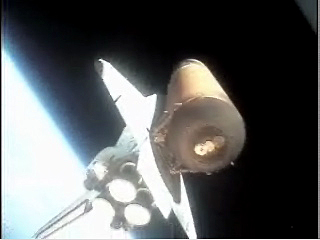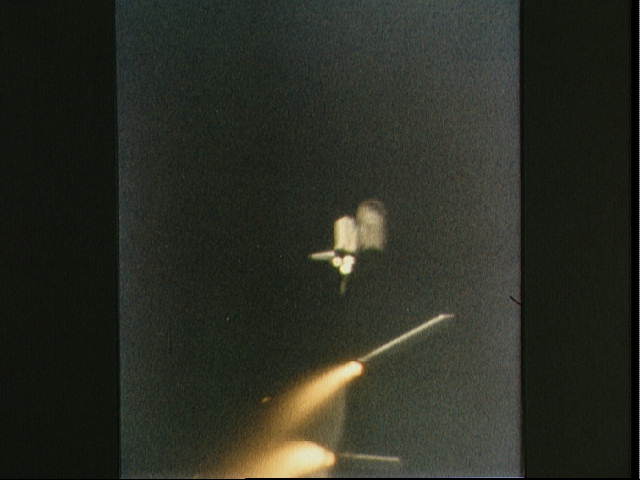B
brandbll
Guest
MeteorWayne":2m3a1ws1 said:It makes the moderator's job much harder...I wish they'd pick better topics myself.
MMW
Perhaps Manny's "Hope and Change Chronicles".... :lol: :lol: :lol:
MeteorWayne":2m3a1ws1 said:It makes the moderator's job much harder...I wish they'd pick better topics myself.
MMW
ZenDraken":2uun0f9e said:This is an interesting intellectual exercise, but there's no way it would be economical, practical, or safe. Much better and frankly easier to start from scratch, and fly a new airframe.
I'd think a 747-class suborbital "White Knight 3" with an orbital "Space Ship 3" as a second stage would be cheaper, easier, and safer than trying to salvage a shuttle airframe.
MeteorWayne":2r2f8tdh said:I often shake my head at the articles they decide to link to. Like this one. The plain and simple fact is, the Shuttle program is in lame duck status. There are 5 missions left, and after that, the fleet will be retired. NOTHING, not even neat ideas, pipe dreams, pie in the sky suggestions, Armegedon, or flying monkeys is going to change that one bit. Why continue to beat a dead horse again and again. There are a hlaf dozen threads here that all say the same thing...repeatedly. There are no more ET's, there's no one to maintain the vehicles after the current missions, there's no money coming from anywhere to suppport it. The program is finished, finito, over with, done.
It makes the moderator's job much harder...I wish they'd pick better topics myself.
MMW
blackarrowwillliveagain":1yhdv3t8 said:Yes, an idiotic suggestion. Okay, you buy an orbiter for $42 million - less engines. Well, it costs NASA with all its existing infrastructure about $1 BILLION per mission. Cloud cuckoo land, why does Space.com entertain idiotic ideas like this?
brandbll":163a6q6a said:Perhaps Manny's "Hope and Change Chronicles".... :lol: :lol: :lol:
najab":dysi56pb said:It ain't gonna happen. Building rockets is a lot more complex than simply bolting some engines onto the back of something and pointing it at the sky. Though, saying that, given the number of changes you are proposing it might make more sense to start with a DC-9 than an orbiter.
For instance on another forum someone suggested using the Russian Burans instead. Likewise you could use the Shuttle Enterprise. This didn't have engines or heat shield, but you would need to use different engines anyway, and for the first stage use you could use much more lightweight and maintenance-free thermal protection.
ZenDraken":1evliwaz said:This is an interesting intellectual exercise, but there's no way it would be economical, practical, or safe. Much better and frankly easier to start from scratch, and fly a new airframe.
I'd think a 747-class suborbital "White Knight 3" with an orbital "Space Ship 3" as a second stage would be cheaper, easier, and safer than trying to salvage a shuttle airframe.
Geoduck2":1jdnhz1i said:An interesting idea but unfeasible.
It would be equivalent to trying to retrofit a Stanley Steamer with a Prius drive train
To outfit a Scottish Castle with electrical and ethernet.
Not to say it wouldn't be possible. Lots of things are possible. It just wouldn't be cost effective and the result would be a kludge that wouldn't work as well as something designed from the ground up with modern systems.
frodo1008":ttalmd9a said:Exoscientist, if you look up the original history of the design of the space shuttle orbiter you will find that all of the original designs for that vehicle were for it to be the "Second" stage of a TSTO system, and never the "First" stage!
So, using something that was never designed for a purpose for that very purpose just is plain ignorant.
Now, you might not be totally incorrect in using the space shuttle orbiter as a "Bus" for human space exploration. Indeed if it could be so used, the orbiter might just be capable of carrying as many as 100 people into LEO, using the very large internal bay. But without an actual use for so many people to get to LEO at this time, just what would be the point?
You are NOT going to place 100 extra people on the ISS! And you certainly would not have anywhere near enough life support equipment and materials to enable the orbiter itself to even stay in orbit for any amount of useful time for such "Tourists". So, unless you build a true space station with a very large capacity for having tourists on board, you really do not have a reason for such a craft anyway!
A far smaller craft as NASA originally wanted it to be, (with a capacity for 10 people at most) would be far more practical and cost affective to jump start Human Space Development in LEO. So indeed the current space shuttle (as magnificent as it has been) now has seen its day.
I may not like that, but it is the truth, and there is nothing to be done about it at this time!
Sorry about that, but that IS the way it IS!




Please check your facts, or show a reference.Astro_Robert":n1592wsg said:The ~70,000 lbs was meant as EMPTY WEIGHT of the shuttle, and was supplied by the ORIGINAL POSTER. Again, actually read some posts prior to commenting on them.
EarthlingX":2yxiteb7 said:Please check your facts, or show a reference.Astro_Robert":2yxiteb7 said:The ~70,000 lbs was meant as EMPTY WEIGHT of the shuttle, and was supplied by the ORIGINAL POSTER. Again, actually read some posts prior to commenting on them.
Space Shuttle orbiter
Empty Weight: 151,205 lb (68,587 kg)
It was a problem for that Mars orbiter ..exoscientist":20m2ozbr said:Just a mix up with the units. Not a problem.
Bob Clark


